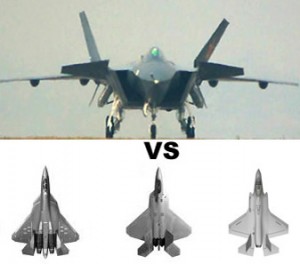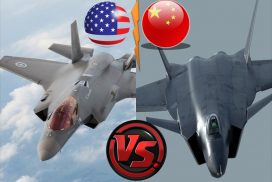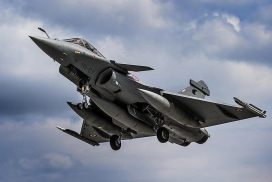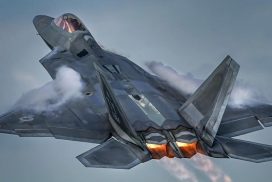In late 2010, Chengdu J-20 underwent speed taxiing test at Chengdu Aircraft Design Institute’s airfield and first known Chinese stealth aircraft has just emerged from a secret development program. The aircraft appears to be somewhat larger and heavier than most observers expected. The J-20 made its first flight on 11 January 2011. It is still in the phase of research & development, stated Maj Gen Zhu Heping of the PLA AF while speaking to reporters on 03 March 2011 in Beijing. As to the expected timeframe by which the aircraft would be finally ready for induction into China’s airpower, Maj Gen Zhu said “there’s still some time required” and “is difficult to say”. Deputy Commander of the People’s Liberation Army Air Force, General He Weirong said in November 2009 that he expected the J-20 to be operational in 2017–2019.
People’s Liberation Army Air Force expects the J-20 to be introduced by 2017-2019. By then PLA AF would not be the second country after United States to have a stealth fighter in its air force. By the same time frame India also expects to induct Sukhoi/HAL Fifth Generation Fighter Aircraft (FGFA) and Russia will introduce Sukhoi PAK FA most probably by 2015. Japan’s Mitsubishi ATD-X which first flight is scheduled for 2014 is also likely to be in production phase by 2017. Korean Aerospace Industries in collaboration with Indonesian Aerospace is also developing KF-X which is envisaged for service entry post-2020. India is also developing the Advanced Medium Combat Aircraft (AMCA), designed by Aeronautical Development Agency (ADA) and to be manufactured by Hindustan Aeronautics Limited (HAL). The roadmap for AMCA was revealed at Aero India 2011. ADA program director PS Subramanyam said “the MCA will be in flight trials by the end of the decade and it will be inducted by the middle of the next decade”
At present the United States Air Force (USAF) is the only air force in the world to have operational stealth fighter, the Lockheed Martin F-22 Raptor. But having a stealth fighter in a country’s air force is not going to be limited to USAF only in this decade. United States will be joined by Russia (Aircraft: Sukhoi PAK FA; Planned induction: 2015), India (Aircraft: Sukhoi/HAL FGFA; Planned induction: 2017), Peoples Republic of China (Aircraft: Chengdu J-20; Planned induction: 2017-2019). Japan, South Korea and Indonesia are also likely to have operational stealth fighters by 2020. However Korean Aerospace Industries KF-X would not be as stealthy as PAK FA, FGFA, J-20 or F-35. The initial operational requirements for the KF-X program as stated by the ADD (Agency for Defence Development) were to develop a single-seat, twin-engine jet with stealth capabilities beyond either the Dassault Rafale or Eurofighter Typhoon, but still less than the Lockheed Martin F-35 Lightning II. In 2007 Japan took the decision to push ahead with the multi billion-yen project to develop its first indigenous stealth fighter the Mitsubishi ATD-X Shinshin. At the time of this decision, production was forecast to start roughly 10 years later, around 2017 and as of 2007 the ATD-X is expected to conduct its maiden flight in 2014. At present India is the only known country in the world to have two stealth fighter programs running in parallel simultaneously, the FGFA and AMCA.
In a race to produce stealth fighters China has stunned most observers at the pace at which the J-20 was produce. However China might have problems meeting its production requirements, as it has several other jet fighter projects in production. Russian military commentator Ilya Kramnik conjectures that China is still 10 to 15 years behind the United States and Russia in fighter technology and may not be able to manufacture all the advanced composite materials, avionics and sensor packages needed for such aircraft, and could instead turn to foreign suppliers. While Chief of the Air Staff of the Indian Air Force Pradeep Vasant Naik has suggested that the J-20 is entirely reverse engineered with no Chinese R&D involved, and questioned if the practice was ethical. Retired USAF General Thomas G. McInerney has suggested that the J-20 design may have been based on cyber-espionage of the Lockheed Martin FB-22 project. No matter how out of much speculation J-20 has made its flight.
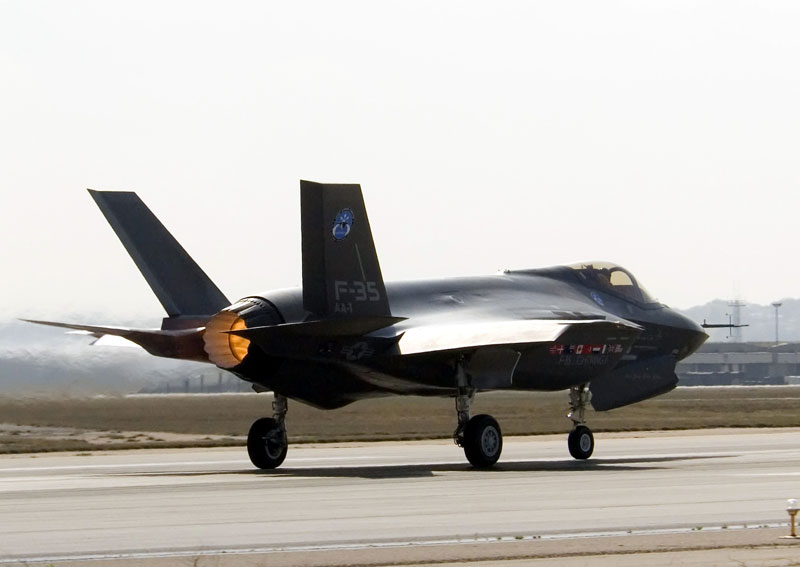
Let us analyze all the stealth fighters which are estimated to be operational and introduced by 2017-2020. First was the Lockheed Martin’s F-35, product of the Joint Strike Fighter (JSF) program. The development of the JSF was jointly funded by the United States, United Kingdom, Italy, The Netherlands, Canada, Turkey, Australia, Norway and Denmark. The United States intends to buy a total of 2,443 aircraft for an estimated US$323 billion, making it the most expensive defense program ever. The JSF program was designed to replace the United States current fleet of F-16, A-10, F/A-18 (excluding newer E/F “Super Hornet” variants) and AV-8B tactical fighter aircraft and to keep development, production, and operating costs down, a common design was planned in three variants that share 80 percent of the same parts. F-35A: conventional take off and landing (CTOL) variant; F-35B: short-take off and vertical-landing (STOVL) variant; F-35C: carrier-based CATOBAR (CV) variant. The F-35 is smaller, single-engined and slightly more conventional then the twin-engine Lockheed Martin F-22 Raptor. The F-35 has a maximum speed of over Mach 1.6 with a maximum takeoff weight of 60,000 lb (27,000 kg). The F-35’s main engine is the Pratt & Whitney F135. The General Electric/Rolls-Royce F136 is being developed as an alternative engine. The STOVL versions of both power plants use the Rolls-Royce LiftSystem, patented by Lockheed Martin and built by Rolls-Royce. The F-35 Lighting II carries weapons internally in internal weapon bays. The main missiles which it carries are the AIM-120 AMRAAM (Advanced Medium-Range Air-to-Air Missile) and AIM-132 ASRAAM (Advanced Short Range Air-to-Air Missile). It can also carry the Joint Direct Attack Munitions (JDAM) – up to 2,000 lb (910 kg), the Joint Stand off Weapon (JSOW), Small Diameter Bombs (SDB) – a maximum of four in each bay (three per bay in F-35B. One of the initial operational requirements of the JSF program was stealth. For this reason the F-35 was designed with a shape for low-observable characteristics with low radar cross section primarily due to stealthy materials used in construction, including fibre-mat. In spite of being smaller than the F-22, the F-35 has a larger radar cross section. It is said to be roughly equal to a metal golf ball rather than the F-22’s metal marble. The F-22 was designed to be difficult to detect by all types of radars and from all directions. The F-35 on the other hand manifests its lowest radar signature from the frontal aspect because of compromises in design.
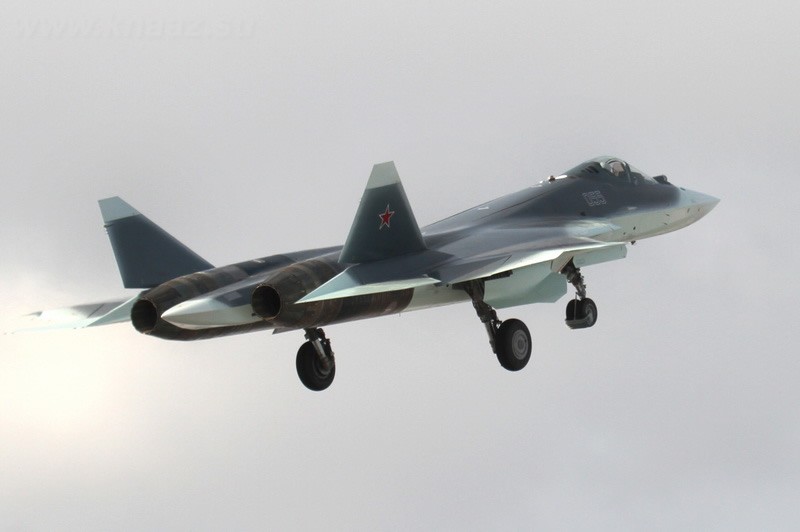
Second comes the Sukhoi PAK FA. The aircraft’s maiden flight took place on 29 January 2010. It was piloted by Sergey Bogdanand and the flight lasted for 47 minutes. On 3 March 2011 a second prototype was reported to have made a successful 44 minutes test flight. On 14 March 2011, the aircraft achieved supersonic flight at a test range near Komsomolsk-on-Amur in Siberia. These first two aircraft lacks radar and weapon control systems, while the third and fourth aircraft, to be added in 2011, will be fully functional test aircraft. The PAK FA is stealth, have the ability to supercruise and will be equipped with the next generation of air-to-air, air-to-surface, and air-to-ship missiles and incorporate a fix-mounted AESA radar. Sukhoi also classified that the new radar will reduce pilot load and the aircraft will have a new data link to share information between aircraft. The PAK FA SH121 radar complex includes three X-Band AESA radars located on the front and sides of the aircraft. These will be accompanied by L-Band radars on the wing leading edges. The PAK FA will feature an IRST optical/IR search and tracking system, based on the OLS-35M which is currently in service with the Su-35S. Hindustan Aeronautics Limited will reportedly provide the navigation system and the mission computer. As stated by NPO Saturn PAK FA used a completely new engine in its first flight. The engine generates a larger thrust and has a complex automation system, to facilitate flight modes such as maneuverability. Exact specifications of the new engine are still secret. It is expected that each engine will be able to independently vector its thrust upwards, downward or side to side. The PAK FA is estimated to have a maximum weapons load of 7,500 kg. It has two internal weapon bays. The PAK FA, when fully developed, is intended to be the successor to the MiG-29 and Su-27 in the Russian inventory and serve as the basis of the Sukhoi/HAL FGFA being developed with India.
After a secret development program the Chengdu J-20 underwent high speed taxiing tests in late 2010 and made its first flight on 11 January 2011. It is larger than most observers expected pointing to long range and heavy weapon loads. The J-20 is a single-seat, twin-engine aircraft, bigger and heavier than the Sukhoi PAK FA and the F-22. It is expected to have a takeoff weight of 75,000 to 80,000 pounds with internal stores only. Chinese sources have claimed that production aircraft will be powered by two 13,200 kilograms (29,000 lb)/WS-10 class high thrust turbofan engines fitted with Thrust Vector Controlled (TVC) nozzles, both made in China. However it is said that the WS-10 engine has suffered catastrophic failures in flight. The J-20 has a pair of all-moving tailfins that are swept back in the F-35 style instead of being trapezoid like the F-22 and PAK-FA tails and ventral stabilizing fins. The J-20 may have lower supercruise speed and less agility than a Lockheed Martin F-22 Raptor or PAK FA, but might have larger weapons bays and carry more fuel. It has an F-22 style nose section but with F-35 style dropped nose, forward swept intake cowls with diverterless supersonic inlet (DSI) bumps and a one-piece canopy. The J-20 may become the first operational combat aircraft that carries sufficient fuel to supercruise throughout its missions. However it’s still in much speculation.
The FGFA (Fifth Generation Fighter Aircraft) is been developed by Russia and India. It is a derivative of PAK FA for the Indian Air Force. The Russian version of the aircraft, PAK FA will be a single-seater while the Indian version, FGFA will be a twin seater. Indian Air Force will get 200 twin-seated and also 50 single seated FGFAs. India will spend over $30 billion to induct 250 FGFAs. Hindustan Aeronautic Limited (HAL) will be contributing largely to composites, cockpits and avionics. HAL is working to enter into a joint development mechanism with Russia for the evolution of the FGFA engines. The difference between PAK FA and the FGFA will be similar to that between Su-30M and Su-30MKI. Su-30M is a standard Russian version of a plane, whereas the Su-30MKI was jointly-developed with India’s Hindustan Aeronautics Limited for the Indian Air Force. The FGFA will be equipped with avionics complex sourced from India, Israel, Russia and France. FGFA will use weapons of Indian origin such as Astra, a Beyond Visual Range missile being developed by India, although in keeping with the Russian BVR doctrine of using a vast variety of different missiles for versatility and unpredictability to countermeasures and it is also expected to have compatibility with many different missile types. The FGFA will be stealthy, have the ability to supercruise, will be fitted with the next generation of air-to-air, air-to-surface, and air-to-ship missiles, and incorporate an AESA radar. It is said to use 2 Saturn 117S engines (about 14.5 ton thrust each) on its first flight. Later versions of the PAK FA will use a completely new engine (17.5 ton thrust each), developed by NPO Saturn or FGUP MMPP Salyut.
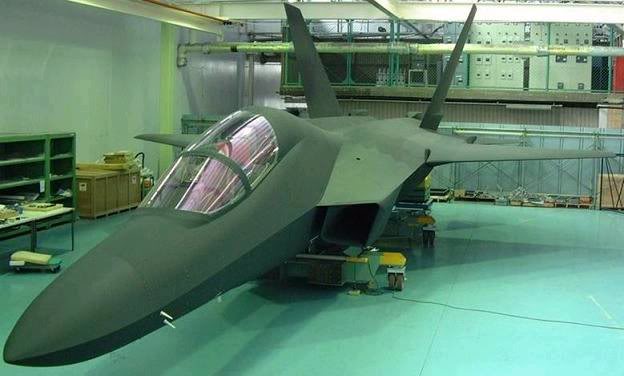
Japanese Ministry of Defense Technical Research and Development Institute (TRDI) is also developing stealth fighter with Mitsubishi. Known as the Mitsubishi ATD-X Shinshin is a state of the art prototype fifth-generation jet fighter that uses advanced stealth technology. ATD-X is an acronym meaning “Advanced Technology Demonstrator – X” and the aircraft’s Japanese name is “Shinshin”. The aircraft’s first flight is scheduled for 2014 and production is most likely to begin in 2017. A mock-up of the ATD-X was constructed and used to study the radar cross section in France in 2005. A radio-controlled 1/5 scale model made its first flight in 2006 to gain data on performance at high angles of attack and to test new sensory equipment and self-repairing flight control systems. Following these preliminary steps, the decision was taken in 2007 to push ahead with the multi billion-yen project. The ATD-X will be used as a technology demonstrator and research prototype to determine whether domestic advanced technologies for a fifth generation fighter aircraft are viable, and is a 1/3 size model of a possible full-production aircraft. Among the features the ATD-X is to have is a fly-by-optics flight control system, which by substituting optical fibers for wires, allows data to be transferred faster and with immunity to electromagnetic disturbance. Its radar will be an active electronically scanned array (AESA) radar called the ‘Multifunction RF Sensor’, which is intended to have broad spectrum agility, capabilities for electronic countermeasures (ECM), electronic support measures (ESM), communications functions, and possibly even microwave weapon functions. It is also speculated that the Japanese Ministry of Defence has speed up its ATD-X project in concern with China’s J-20 which has made its first flight on January 2011.
India is also developing the Advanced Medium Combat Aircraft (AMCA), which would be Indians first indigenous stealth fighter. It is designed by Aeronautical Development Agency (ADA) and will be manufactured by HAL. The roadmap for AMCA was revealed at Aero India 2011 by program director PS Subramanyam. As said by Subramanyam the AMCA will fit into the Indian air force’s future structure. It will be a 20 ton aircraft with a 1,000km range, fitting between the 10 ton, 500km range of the HAL Tejas and the 30 ton, 1,500km range of the fifth generation fighter aircraft (FGFA). The AMCA does not clash with the FGFA, and will be comparable to the Lockheed Martin F-35, with the FGFA comparable to the F-22 Raptor. The AMCA will be a single-seat fighter. A two-seat version will be developed but primarily as a trainer. AMCA would be a medium-weight combat aircraft with low observable features and a payload capability of more than five tones. It will have swing role capability and “provide greater flexibility in the application of aerospace power”. ADA also said the AMCA will have a number of features to increase its stealth. At Aero India 2011 it was revealed that the AMCA will be in flight trials by the end of the decade and it will be inducted by the middle of the next decade. According to the specification provided by the Indian Air Force it would be a 20 ton aircraft powered by two GTX Kaveri engines. The AMCA will be designed with a very small radar cross-section and will also feature serpentine shaped air-intakes, internal weapons and the use of composites and other materials to increase its stealth capabilities. The aircraft will have the capability of supercruise by using twine GTX Kaveri engine with thrust vectoring nozzle. The aircraft will be equipped with missiles like DRDO Astra and other advanced missiles and precision weapons. The aircraft’s avionics suite will include AESA radar IRST and appropriate Electronic warfare systems and all aspect missiles warning suite. There might be also possibility of a naval version. It will complement the HAL Tejas, the Sukhoi/HAL FGFA, the Sukhoi Su-30MKI and the Medium Multi-Role Combat Aircrafts (either Eurofighter Typhoon or Dassault Rafale).
Korean Aerospace Industries (KAI) is also said to be jointly developing stealth fighter with Indonesian Aerospace. The primary user will be Republic of Korea Air Force (ROKAF) and Indonesian Air Force. The project was first announced by South Korean President Kim Dae-Jung at the graduation ceremony of the Air Force Academy in March 2001. The aircraft is designated as KAI KF-X. However it will be not as stealthy as other stealth fighter which are been developed by Russia, China and India. The initial operational requirements for the KF-X program as stated by the ADD (Agency for Defence Development) were to develop a single-seat, twin-engine jet with stealth capabilities. But the stealth would be beyond either the Dassault Rafale or Eurofighter Typhoon, but still less than the Lockheed Martin F-35 Lightning II. Neighboring China’s unveiling of its J-20 stealth fighter has added force to the ROKAF’s desires of acquiring a stealth fighter. Operational requirements specify 50,000 pounds of thrust provided by one or preferably two engines, high-speed interception and supercruise capabilities, basic stealth technology and multirole capabilities. South Korea will fund 60% of the aircraft’s development, and expects foreign partners to provide the remaining 40% of the development funding. South Korea possesses 63% of the necessary technology to produce the KF-X, and is therefore seeking cooperation from Indonesian Aerospace and Lockheed Martin to develop the KF-X.
All the stealth fighter which will be operational and introduced in this decade will surely shift the balance of air power. China’s unveiling of its J-20 stealth fighter is surely a concern for neighboring countries like India and South Korea. But India is well prepared to induct the Sukhoi/HAL FGFA to IAF at the same time when China will be introducing J-20 to PLA AF. It is more likely to see a stealth vs. stealth air war fare in future conflict in Asia then in America or Europe.

